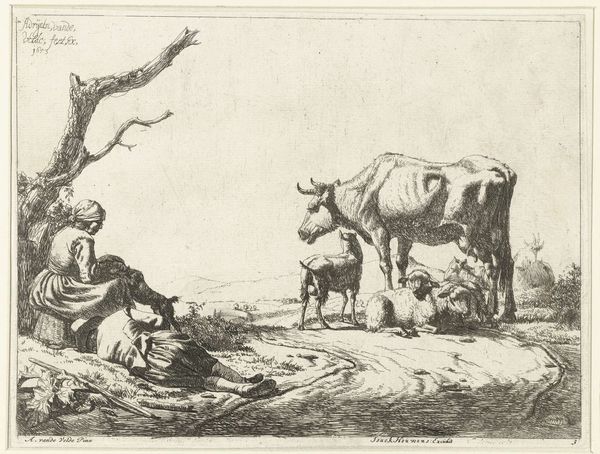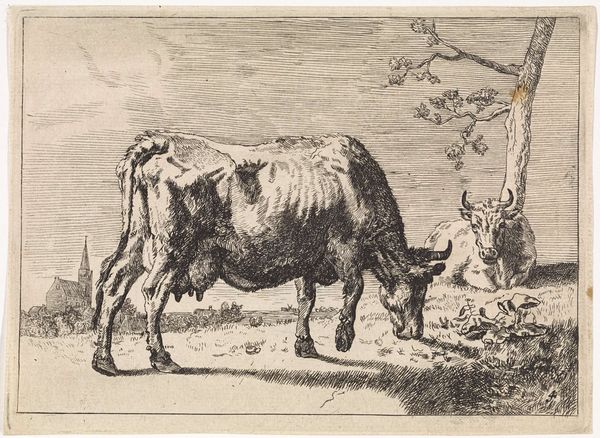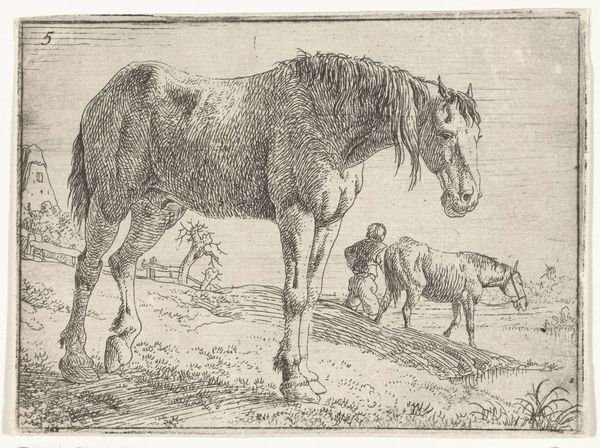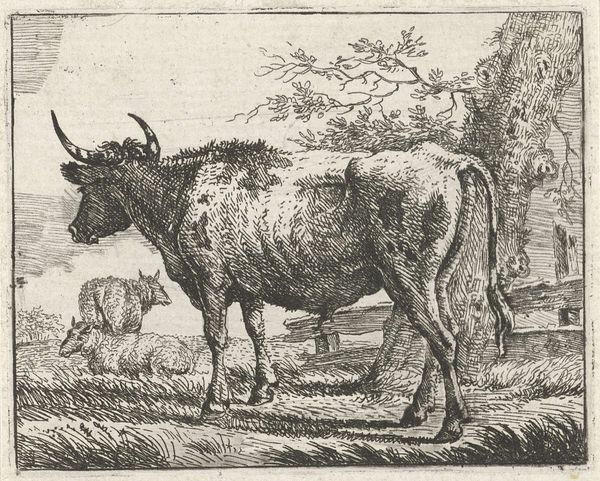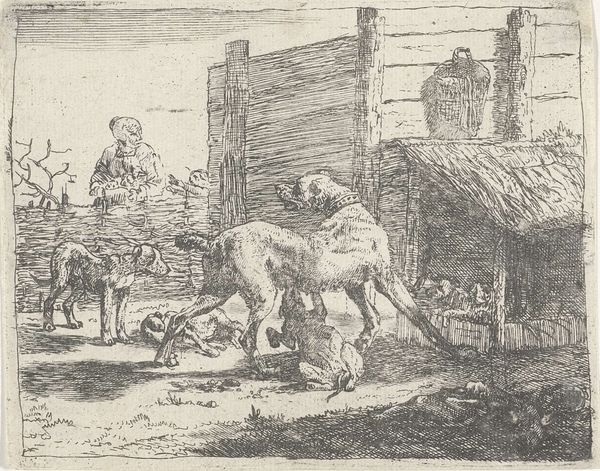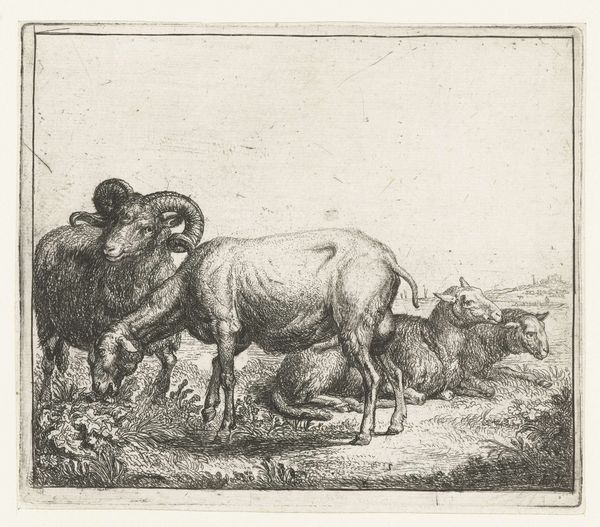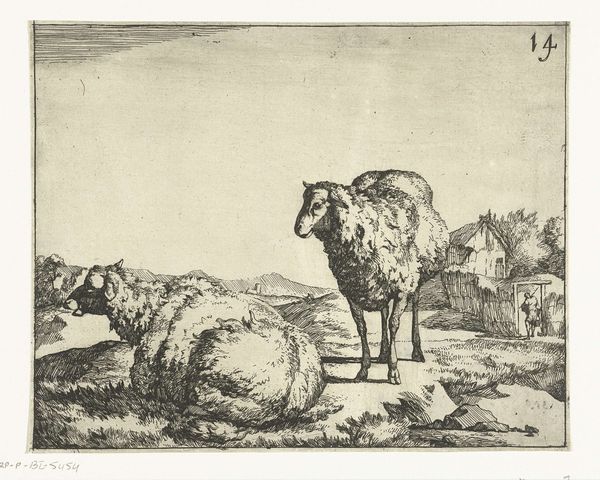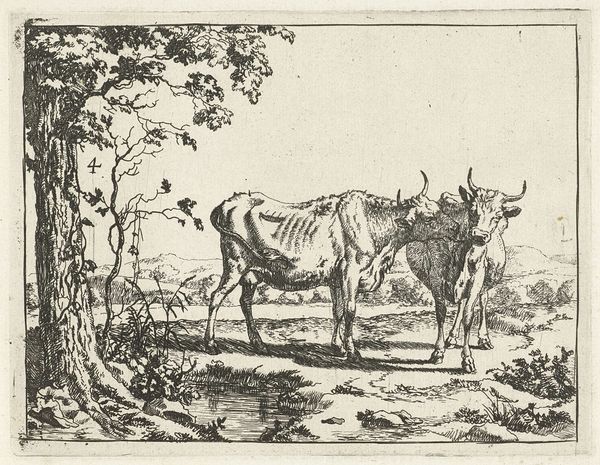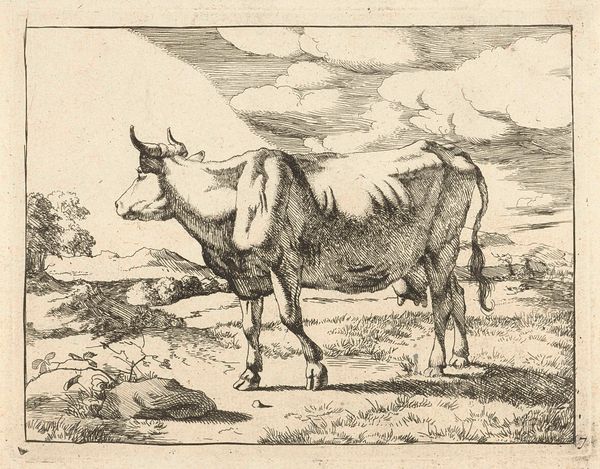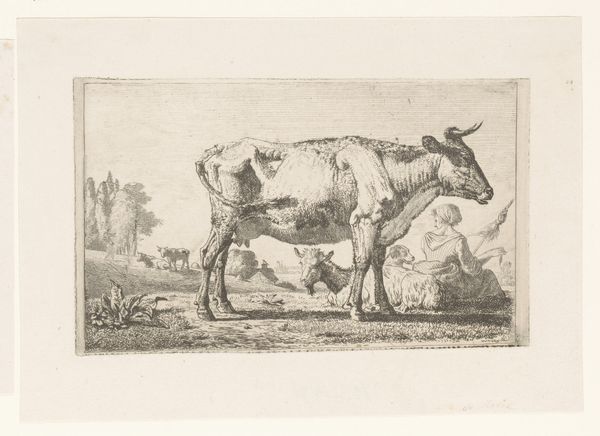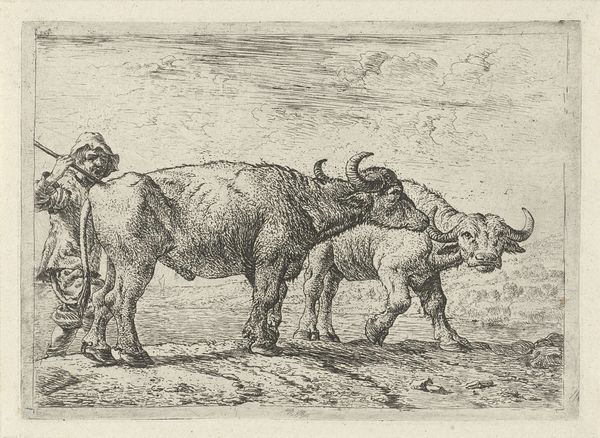
drawing, etching, ink
#
drawing
#
ink drawing
#
dutch-golden-age
#
pen illustration
#
pen sketch
#
etching
#
pencil sketch
#
landscape
#
figuration
#
personal sketchbook
#
ink
#
ink drawing experimentation
#
pen-ink sketch
#
pen work
#
sketchbook drawing
#
genre-painting
#
sketchbook art
#
realism
Dimensions: height 83 mm, width 112 mm
Copyright: Rijks Museum: Open Domain
Editor: So here we have "Melkmeid met koe," or "Milkmaid with Cow," created sometime between 1647 and 1674 by Jan van Ossenbeeck, an ink drawing that’s also described as an etching. It has such a simple, everyday quality about it... What strikes you about this piece? Curator: The etching speaks to the Dutch Golden Age's fascination with the everyday. We see this not only in the choice of subject – a milkmaid and her cow, common figures in the rural landscape – but also in how it positions labour within a certain social and economic framework. This image is produced during a period of massive wealth accumulation in the Netherlands due to their role in the trade. How does it intersect with the developing sense of Dutch identity? Editor: That's interesting. It hadn’t occurred to me to consider it as an expression of Dutch identity. So, are you saying the image is more than just a snapshot of rural life? Curator: Absolutely. This work also interacts with contemporary socio-political ideas about nature, work, and wealth. Etchings like these were readily reproducible, making them available to a wide audience. We can therefore look at this from an economic standpoint – such images became commodities too, didn't they? Editor: Ah, so it's about the popularisation of this idealised rural life and, in turn, its commodification. It’s fascinating to think about how deeply intertwined the simple image and broader historical narratives really are. Thanks for shining a new light on it for me! Curator: Of course! Looking at the art world and its history allows us to really start questioning how simple observations become powerful statements. It challenges us to continuously learn about art and its context.
Comments
No comments
Be the first to comment and join the conversation on the ultimate creative platform.
